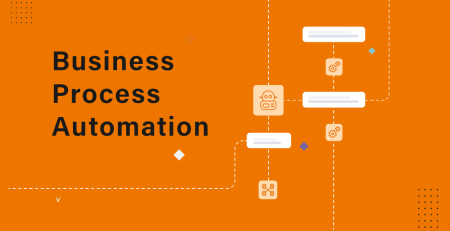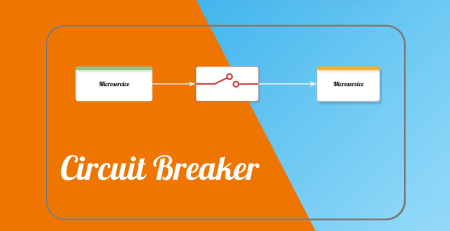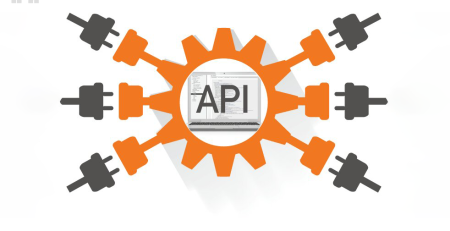How to Design Optimized Software Development Process
Every software development project must have a software development workflow. It influences all three aspects of team performance, product quality, and project timeline equally. Once properly optimized, it can offer the product owners a host of advantages, including reduced development costs, efficient resource allocation, increased team productivity, and much more. Therefore, during the product development process, it is crucial to continuously monitor and enhance the software development workflow.
In this article, we’ll examine the elements of a strong software development workflow and describe how to effectively optimize it.
What Is a Workflow in Software Development?
The Software Development Life Cycle (SDLC), also known as the stages of software development, are connected by a workflow, which enables software developers to create applications more successfully.
A software development workflow, which is a looped process, decides what should be done at each stage and offers guidance for future steps in product development. So, a software development team with a well-established workflow can:
- See a bigger picture of the project
- Clearly determine each team member’s responsibilities
- Understand how their work contributes to the entire project
- Foresee any project bottlenecks
- Effectively prevent and overcome any challenges that may appear during app development
- More evenly spread the resources
- Improve their performance on the current project and further app-building projects.
Elements of a Software Development Workflow
The stages of a software development workflow are not rigidly defined. Depending on the classification, there may be five to seven elements. We’ll examine the five-stage workflow for software development. A 7-stage development workflow is not necessarily preferable to one with only 5 components. Software developers can create high-quality software using a 5-stage workflow while spending the least amount of time and resources possible.
Planning and Analysis
The first phase of the SDLC loop is planning and analysis. It establishes a number of project parameters that have an impact on future software development. The software development team now defines the project’s technical and business requirements.
- Product requirements: The software development team determines the scope of the product, as well as the architecture, tech stack, and other elements of the developed application, such as the features, functionalities, and services that should be included.
- Business requirements include things like client expectations for the finished product, its goals and objectives, any specific branding standards the app should adhere to, and more.
- The software development life cycle (SDLC) roles in the team, project scheduling, resource allocation, potential risks, and problems, as well as solutions to them, are all project requirements.
Business analysts, project managers, stakeholders, and the development team communicate frequently during this stage. Planning and analysis should result in detailed project documentation and a clearly defined project plan.
Specifications, user stories, user scenarios, visual application design, and other materials may be included in the project documentation. A description of the development process, deadlines, milestones, results, and deliverables should all be included in the project plan.
UI/UX Design
UI/UX designers produce the visual component of the requested solution during this phase. To do this, they create wireframes and prototypes, test the application’s usability, and then make any necessary changes. To ensure that the final product reflects the client’s corporate identity, UI/UX developers frequently have to modify the application interfaces to the specifications provided by their client.
Numerous changes and experiments are made during the UI/UX phase. A good UI/UX design takes care of all user issues, makes user interfaces simple and intuitive to use, and is always tailored to the needs of the user.
Development and Coding
Software developers now begin the process of creating a product. The methodology selected has a significant impact on the actions software developers take throughout the development process.
Although there are many different development methodologies, Waterfall and Agile are the most common. The Waterfall is frequently used to create specialized software for industries with clear, unchanging project requirements, such as the creation of software for the aviation, medical, and other industries that demand high levels of precision. Agile is more widely used when end-user requirements have a significant impact on the development process and software is being developed for a variety of business niches. In this way, Agile enables software developers to swiftly respond to changing demands, add or remove features, change the components of the finished product, and more.
Testing
The testing stage is heavily influenced by the methodology employed. With each new iteration of the development process in Agile, testing and code review phases take place. After the software is developed, the testing phase is included in the waterfall methodology. However, the final product testing must be done by the Quality Assurance (QA) team before the product is made available for purchase.
Companies frequently give a select group of beta testers access to the finished product. Beta testers are the product’s actual customers who use it for the first time and notify the business if they discover any potential flaws. The software development company uses a number of tools to track and analyze how end users interact with the resulting digital solution in the meantime.
Testing can take a while, especially if the developed solution has a lot of intricate features. Even so, it’s a crucial step in the SDLC process. A badly tested piece of software can damage a client company’s reputation and significantly lower its return on investment.
Implementation and Maintenance
The product can be launched onto the market once it has been constructed and tested. To automate this process and guarantee a continuous deployment model, many businesses use a variety of tools.
Even though it’s common to think of the implementation stage as the last in a software development project, the SDLC process doesn’t end here. Software developers should keep the developed solution current, ensure that it satisfies customer requirements, and have as little downtime as possible after presenting the finished product to end users. Additionally, they are still testing their digital solutions at this point to ensure that each of their features operates as intended.
Ways To Optimize Your Software Development Flow
There are numerous ways for businesses to enhance their SDLC workflows. They can get a lot of them by managing several software development projects. We’ve examined our extensive professional experience in the global software development market to develop the best practices for the software development workflow. Let’s examine them more closely.
Emphasize Code Quality Over Documentation
Clearly defined processes for product development are unquestionably the foundation of good software. However, time-to-market is frequently a much more crucial factor in the application release than detailed documentation. It’s critical to introduce your product to customers as soon as possible and make sure that it attracts users effectively.
Software developers should avoid excessive documentation and wasting time, money, and resources.
- Add more product-testing activities to the development process
- Regularly hold code-review meetings
- Keep up with the coding standards throughout the development process
- Build a product MVP.
Carefully Select Your Project Management Tools
It’s crucial to have the appropriate project management tools on hand in addition to choosing the right tech stack for the required solution. Although there are many different tools available, project managers choose the ones that best meet the needs of the development team and use them from project to project. For instance:
- GitHub is a VCS that is extremely popular among many software developers worldwide. It allows to store and share application versions, effectively review codes, track the history of code changes, and much more
- Redmine is a project management tool that suits perfectly for small and large software development projects. It allows tracking issues, creating roadmaps and highlighting milestones, using team charts, and performing many other tasks in Redmine.
- Jira is a popular tool used for bug tracking and Agile project management. It is used to track code issues, monitor app development stages, management of software testing procedures, and more.
Ensure Transparency and Strong Communication
Each team member must be fully committed to the software development process in order for it to be successful, stay current on project changes, and promptly inform clients of these changes.
Hold Retrospective Meetings After Each Project Completion
Meetings known as retrospectives are typically held following the release of software. It assists team members in evaluating and enhancing team performance. Participants on the team must respond to a number of questions, including:
- What has the team accomplished?
- What were the main bottlenecks and obstacles the team encountered?
- How can team participants improve the development process?
Nile Bits Best Practices
At Nile Bits, we place a high priority on creating an open software development and project management process as well as effective communication between the customer and the outsourcing team.
We provide the subsequent software development procedure:
Requirements Analysis
To provide the best resources, we carefully assess the needs of the customer and the company’s objectives. Following a thorough analysis of the project requirements, we recommend the ideal team members and a timeline for the project’s completion.
Delivery
We create the programming code using the previously selected language or technology while performing both front-end and back-end development.
In order to make sure everything goes according to plan, we give the customer reports on each stage of the project development.
Testing
Every stage of development is tested by our QA specialists, who also make suggestions for improvements and report any errors found.
We promise fully managed teams and mature processes. Our entire workflows and processes are ultimately transparent. Through communication and project management tools, as well as report documentation that carefully examines all project activities, you have complete visibility.
Our project management system, which has extensive management, tracing, and monitoring capabilities, is accessible, and we can also use any project management system the client suggests.
We employ both the cutting-edge Agile, Scrum, and Kanban methodologies in addition to the well-known Waterfall method of software development.
To inform clients about projects, we typically use a set of standard reports.
All forms of communication with our clients are conducted in English, including in-person meetings, phone calls, email correspondence, and instant messaging services like Skype.
- E-mail;
- Instant Messengers (Skype, Viber, Telegram, Whatsapp, Slack, Microsoft Teams);
- Project Management Systems (Azure DevOps, JIRA, Basecamp, Redmine, etc.);
- Versioning Systems (Subversion, git, Mercurial, even CVS – whatever you like);
- Bug Tracking Systems (Bugzilla, etc.);
- Reporting Systems (for keeping track on what is going on and for billing purposes);
Conclusion
The workflow for software development is a crucial step in the creation of any application. Once properly optimized, it enables teams to precisely predict their actions at each stage of development, assign roles on the project effectively, distribute resources equally, and avoid significant bottlenecks. Based on their extensive experience with various software development projects, companies can more effectively optimize their software development workflows.
Our teams have provided software development services to a variety of industries for more than 8 years. For each application-building project they work on, they establish efficient and effective software development workflows. Do not be hesitant to get in touch with us if you are considering developing your own software solution.













Leave a Reply